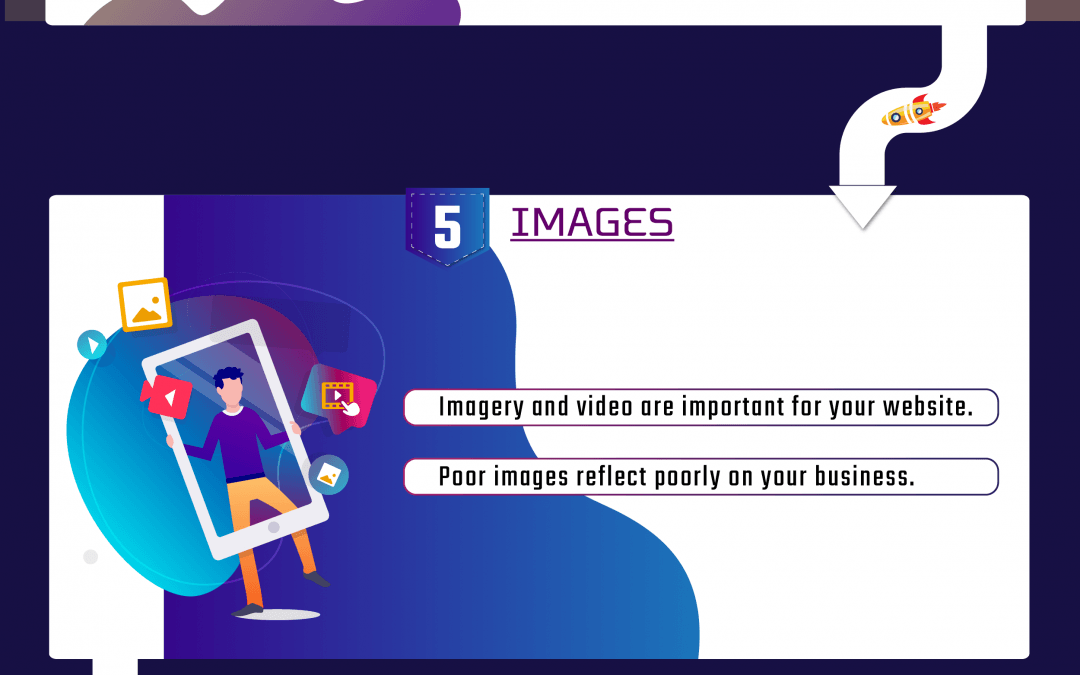10 Website Tips For Local Business
Ten Easy Steps to Create Effective Web Designs for Local Businesses
For a local business, utilising a website correctly can be the most effective tool for marketing. The best companies in the world have been investing in web design for many years, realising that people these days do business (and almost everything else) online. It’s high time that local businesses cash in on it especially since the internet is deemed to be the great equalizer competition-wise.
Website design isn’t as complicated as it may seem at first. All it takes is a bit of research, understanding local market and a pint of creative juices. Listed here are ten important steps that can help business owners build a seamless and effective website for their business.

1. Research
Ideas don’t just appear out of thin air. As in any effective marketing campaign, you should identify you target market before creating appropriate messaging and planning the execution of your marketing campaign. Here are some important pointers to consider:
- Be acquainted with your target market. Identifying your market profile based on their age, gender, or purchasing power helps you win half the battle. This will help you tailor your marketing message to catch the interest of your target market. Consider the demographic profile of the immediate locality of the business.
- Identify your customers’ habits when they use the internet. It is one thing to know and another thing to understand. List down the websites and social media platforms frequented by your target market. Learn how much they spend on the internet talking to friends and loved ones. This will help you determine how to execute your message to reach the right people.
- Assess your competitors’ websites. As a new player, you will want to know how your competitors within your locality are doing in terms of messaging and execution. Check which of your competitor’s websites are doing well and which are doing poorly in terms of customer visits. This will help you have a grasp of what you should and shouldn’t apply to your own website.
2. Your Domain Name
Your domain name is likely the first thing potential customers will read on your website, thus your domain name should reflect the nature of the business. Simply said, the domain name must be related to the local brand – the overall representation of what the business does and whom it caters to.
What makes a good domain name?
- The domain name must be representative of your business.
- The domain name must be short, catchy and easy to remember. Customers shouldn’t have a hard time remembering your domain name. Likewise, visitors shouldn’t have to type a long domain name in their browsers.
- The domain name, like your brand, should be unique.
3. Site Map
The treatment in building a website should be similar to writing a book. Organize website content by putting together an outline which can also serve as the site map. It is important for websites to be user-friendly. The audience can simply look at the site map to easily locate the information that they need from the website.
The website should at least have the following information.
- About Us (Who you are) – This should adequately describe who you are or what your business is about. This can include the company’s vision, mission, and history and what sets your business apart from the competition.
- The Product/ Service (What you do) – This should substantially cover the products that you produce or the service that you provide.
- Contact Us (How to get in touch) – Some users may want a more personal response to their questions or suggestions. In this portion, you can provide contact details and e-mail address.
4. Website Design
A good web design consists of a presentable layout to allow the users to navigate through the content without difficulty. The design need not be flashy and heavy in animation. The design should satisfy the following conditions:
- The design must match the nature of the business
- The target audience must find the design appealing.
- The overall design must be user-friendly and easy to navigate.
- It should have both desktop and mobile format.
5. Images
People in general tend to be more visual than logical. Images are the most effective way to capture the attention of your visitors.
Aside from the name of the brand, the first content that appeals to a person’s mind is the imagery than the actual words. Good websites include carefully-curated images and videos of the products or service being offered by the business.
Visual communication is an important marketing tool to lure your visitors to try your product or service. It is important to remember that poor pictures reflect poorly on your business. Web designers must take the extra mile to make the product look enticing and the service appear welcoming.
For example, if you own a restaurant, the photos of your food should appeal to the local palate. The best images are when it is not just the sense of sight that they appeal to but also to the rest of the senses. It is not enough that your customers can see a chicken, they must be able to taste it, smell it and feel it even just by looking at it.
6. Content
Impeccable design and images alone without relevant content is all hat and no cattle. A good local business website design puts together all information collected about the target market. The tone, the language and type of content must appeal to your end users. It is content that enables a website to rank higher at search engines. Here are the things that must be considered when creating content:
- Quantity matters but it is quality of content that brings all the viewers to your side of the fence.
- Content must be Search Engine Optimization (SEO) -ready. SEO is the process in making written content to rank higher in search engines. Content must revolve around a certain keyword that you think is often searched by your potential market when using search engines. This is why it is imperative for owners to understand online habits of their target audience. For example, if you own a pasta business based in Colorado, your articles should revolve around the keywords “best pasta in Colorado”
- The content must be engaging. Poor grammar reflects poorly on the business.
- User-derived content such as testimonials encourage interaction and valuable feedback from audience.
7. Name, Address and Phone Number (NAP)
Some users will want to talk to a representative of the business for inquiries that may include product offering, prices, schedule or other information that may have not been included on the website. Not only should the NAP be consistent across the website, it must also be regularly updated whenever the business has to change its contact information.
Pertinent contact details and a map showing your business location must be visible in the website. This is always good for the business because it shows viewers that the business is committed into hearing what they have to say. Feedback helps the business improve, grow and eventually flourish.
8. Building your Website
It is one thing to come up with satisfying images and relevant content but putting both together to build a seamless website is another issue altogether.
The two key things about building a website is to make the overall layout user-friendly and to place images such that it can easily draw the seldom undivided attention of the market into the website. The overall flavor a website for local business should match the habits of the local consumers granted that they are the end users of the website.
These two things are determined by the quality of the back end coding of the website. They should conform to standard web design practice.
9. Launch your website
Before you launch your website, check if everything functions or if all sections work. The photos must load correctly and the written content must be proofread. Once the website is working according to planned, business owners can now launch their website. When introducing their website to the public, many businesses engage in much fanfare such as download-able vouchers or electronic discount coupons. These practices help raise awareness that the local business has stepped up its game through its website.
In order to get people visiting the website, owners can advertise through various media channels. This includes traditional media such as TV and print. The best way to get people into visiting your website is by taking advantage of social media platforms, which has the most engaged users.
Another tool to launch the website is getting listed in relevant directories. For example, a small Italian restaurant can be listed in an Italian lifestyle magazine online directory. Google Places is a good place to start.
10. Update and Optimise
Rome wasn’t built in a day and the same applies to even the best websites. High-ranking websites contain updated content optimized for search engine. Building a website is a continuous process of understanding both the brand and its market. Over time, the business will evolve most of the time in the same manner as the needs and wants of the market. It is important to be breast of these changes in developing not just the local brand but also the website.
Regardless of these changes, the content added to the website must always be relevant to the user. It is important to focus on important keywords – those that are relevant to the business.
Creating a local business website design may sound complicated at first but once you get the hang of it, you will realize how powerful websites can be in introducing the business to the rest of the world.

Daryl Smart
Daryl has an avid interest in website designs for small business. Having come from a small business background himself, he understands the concerns and frustrations small businesses experience when trying to develop their online presence.
